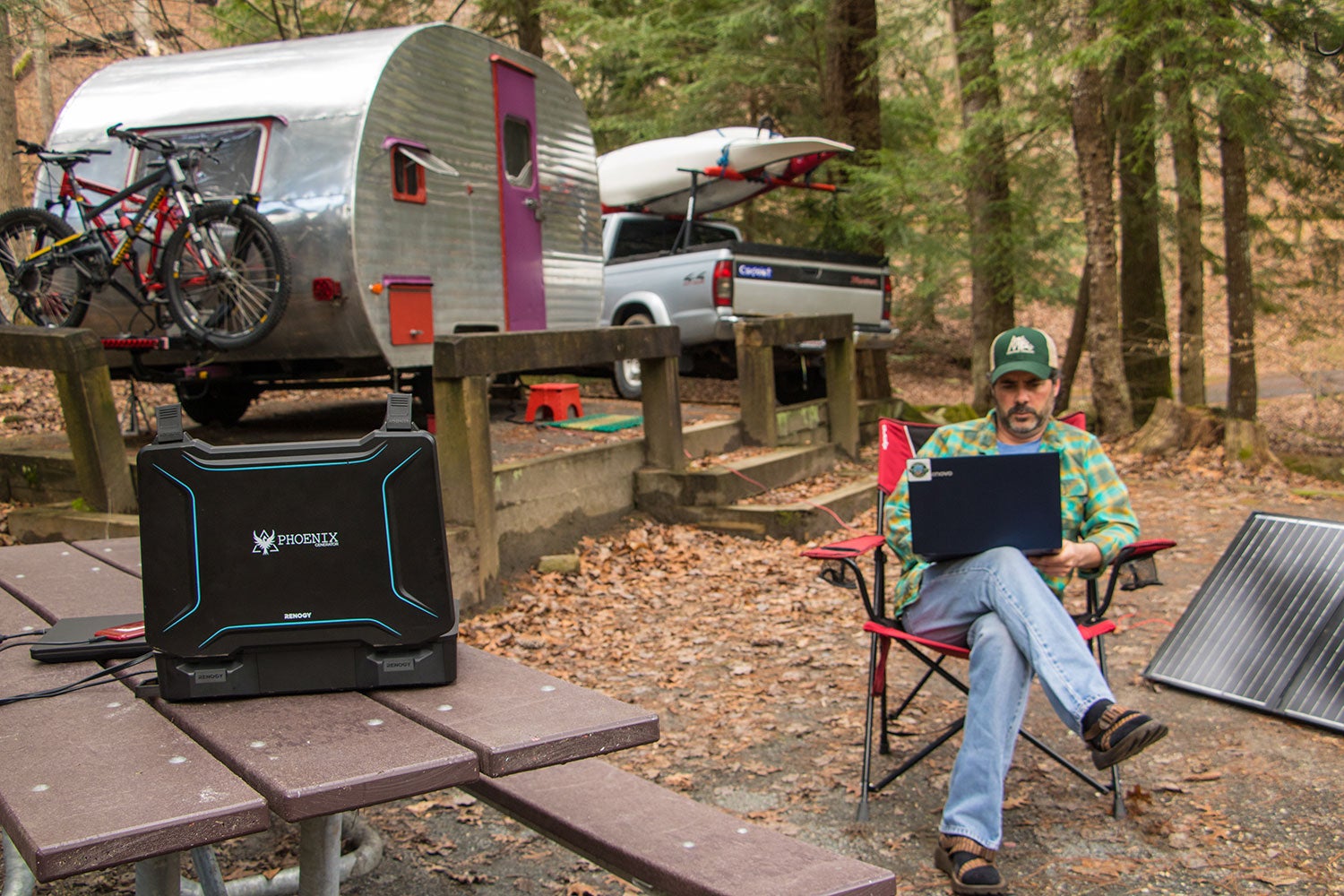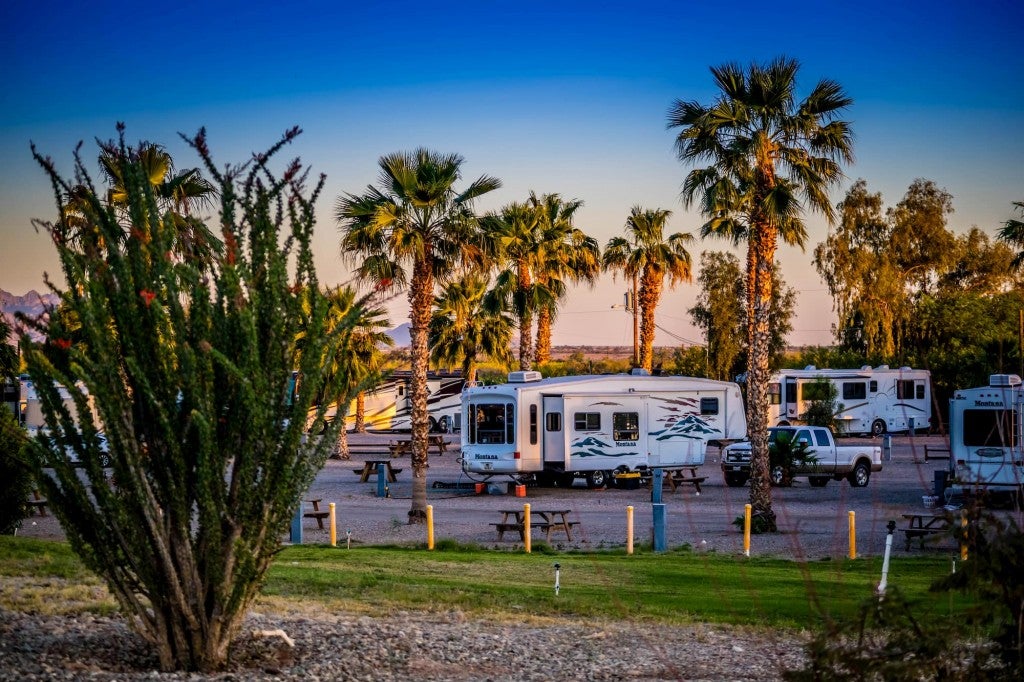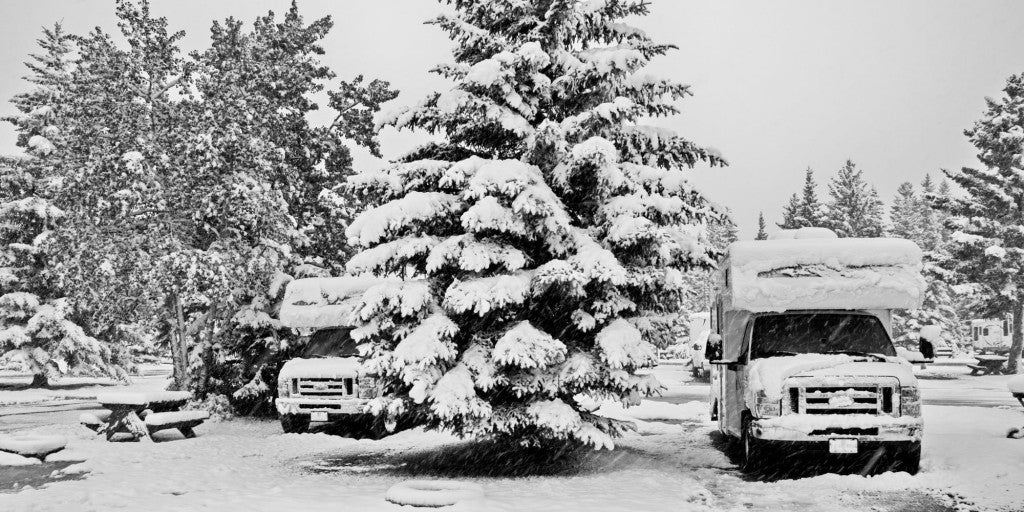Shari and Hutch live on the road full-time in their vintage “canned ham” trailer. Every Thursday, they’re bringing us stories from the road. This week, they’re sharing how they power their life with solar power from Renogy.
Lots of people we meet on the road are curious about how we use solar power to camp full-time.
We intentionally set up our panel on our camper where it can readily collect energy. But we also placed it to make a statement about our choices. By making our solar panel visible, we’re encouraging dialogue about our use of solar power, and we love to educate people about the sustainability of this power source.
So, let’s talk solar!
For the past six years, we’ve run our mobile lives nearly exclusively on solar power. We selected a portable panel over a permanent roof installation for a couple of reasons: we were afraid to put a large panel bracket on the roof of our 60-year-old vintage trailer, and we wanted to be able to park our trailer in the shade without wasting valuable charging time — we simply remove the panel and place it in the sun.
Over the past 6 years of living on the road, we’ve become passionate advocates for solar power and downsizing energy needs. We challenge you to get rid of your gas powered generator!
Solar Power Explained
Solar powered systems are built upon 3 stages: collection, storage, and usage. Let’s discuss each:
Collection
When sunlight hits a solar panel, electrons start flowing. When there’s no sun, there’s no flow.
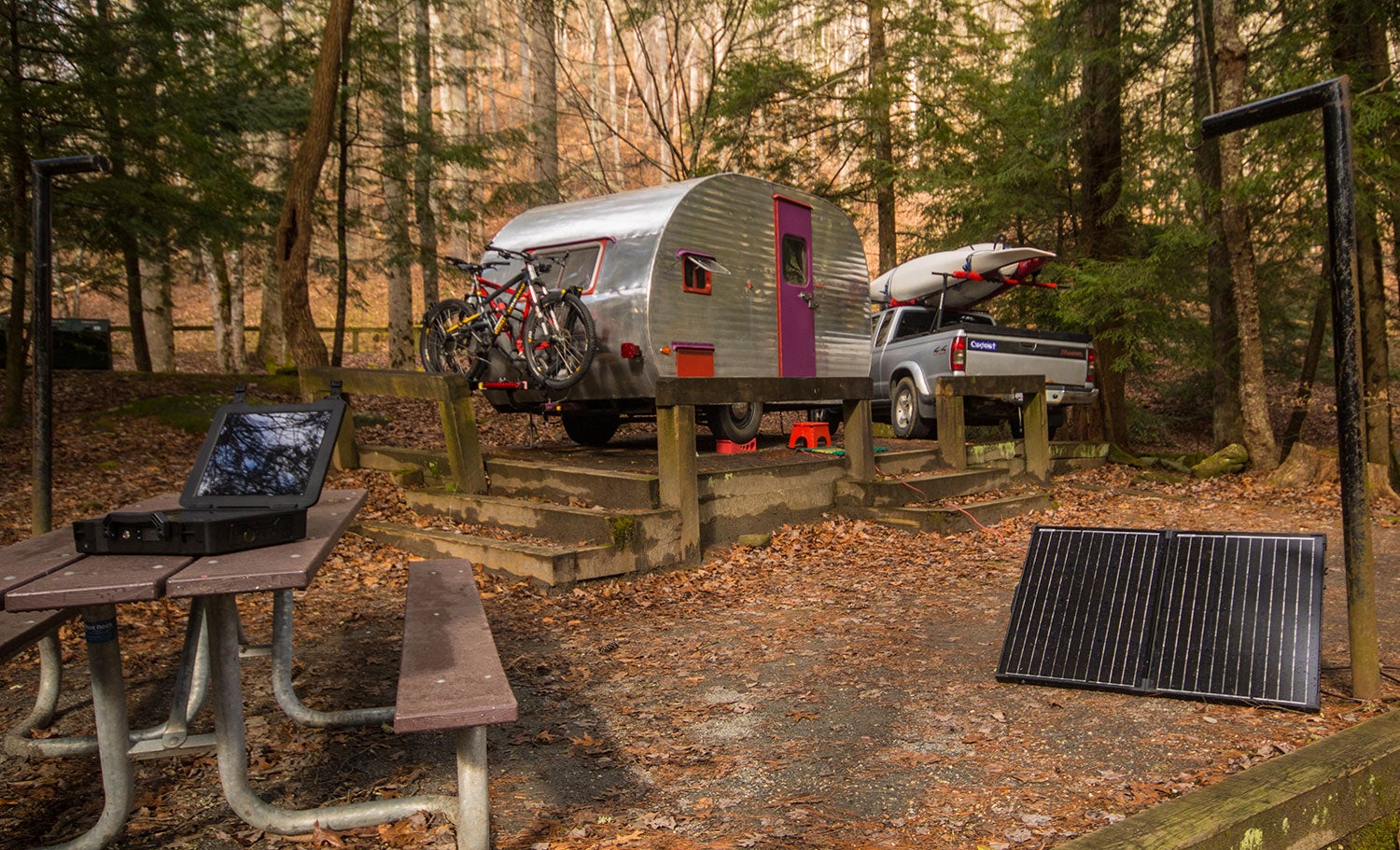
Three things affect the amount of flow: the size of the panel’s output, the number of panels linked, and the availability of unobstructed sunlight. We use a 100-watt folding solar panel with an integrated stand made by Renogy, and we try to optimize its location by moving it around to the best spot throughout the day, whenever we can. We used to have an 80-watt panel, and while that functioned fine, we have certainly noticed the benefit of the extra 20 percent in terms of charging performance.
Naturally, the best time of year for solar is summer, when there’s more sunlight hours and the sun is at a steeper angle to the northern hemisphere. However, if we are intentional, we can collect an adequate amount of energy during the winter months, depending on our location. If we are in the southwest, we can collect all we need and then some in just a few hours. But, if we happen to be in Ohio during the perpetually grey days of February, we might need to plug in to shore power. And, we might want to consider why we’re in Ohio in February!
Storage
We harness the solar power during the day and store it for later use when we need to run lights, a fan, or to charge up our phone, laptops, or rechargeable batteries. The solar panel connects to the battery via a charge controller, and we use just one 12-volt deep cycle marine battery to power our lives. The charge controller is an important device which prevents the panel from overcharging the battery. Many charge controllers also have an integrated display which indicate the battery’s charge.
One thing we learned the hard way is that batteries don’t like bitter cold. If you’re going to store your camper over the winter, remove the battery and store it somewhere like a basement or garage. We lost our first battery after leaving it in our rig in the mountains of North Carolina while we traveled abroad to volunteer for a few months.
Prepare for your next adventure by downloading maps. The Dyrt Pro lets you download maps and campgrounds without cell service. “My alternative to using pro would be to drive back out to cell service”.
Usage
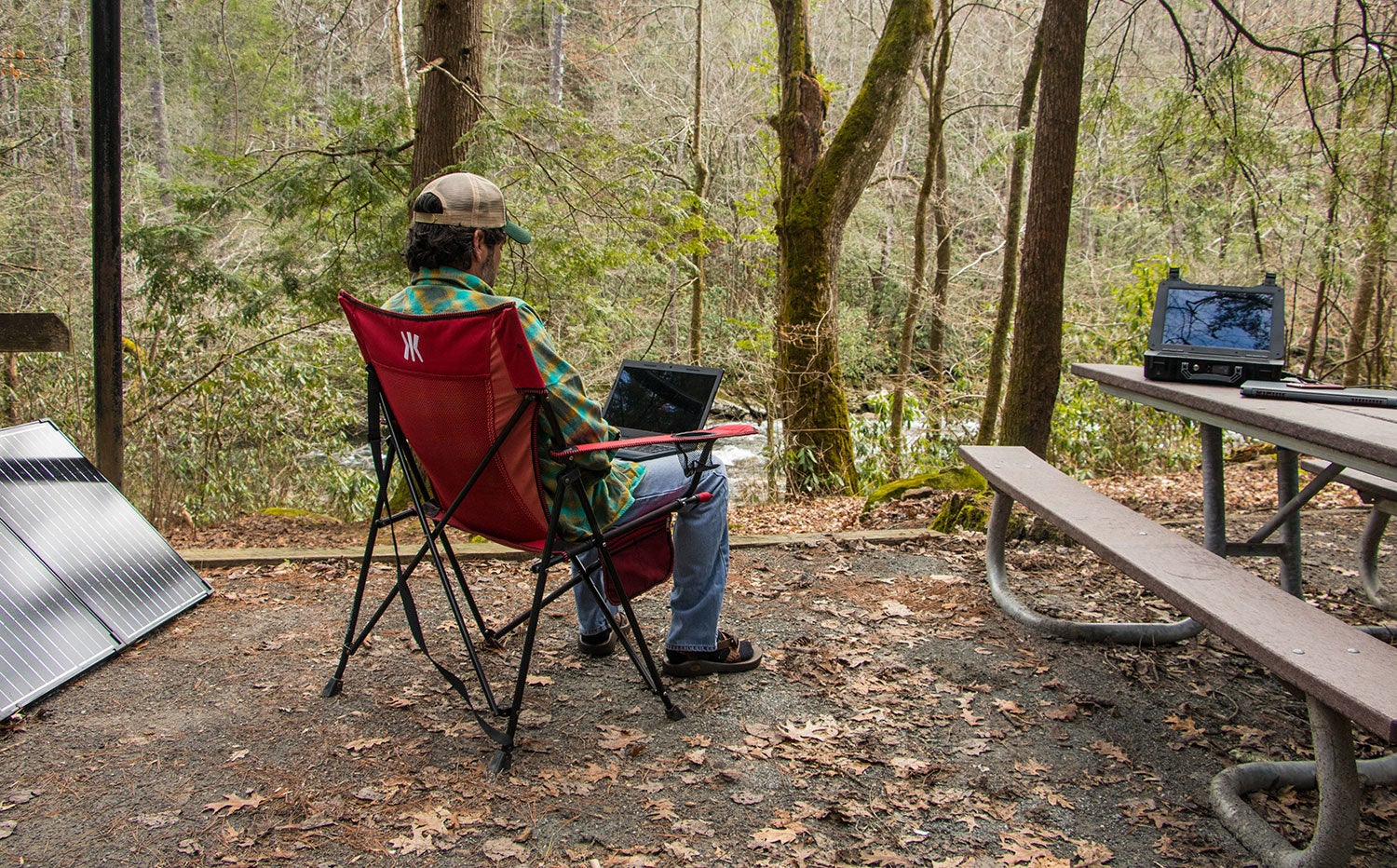
The battery supplies Direct Current (DC) at 12-volts. There are many RV appliances made to run on DC. We run our Fan-tastic Vent fan directly from the battery and it has been the best single upgrade we made during our renovation. This little fan removes cooking fumes and cools our trailer at night.
Even in warm, muggy conditions we can close all the windows in the trailer except the one next to our bed and keep a cool breeze flowing over us all night long. With this fan, we do not need air conditioning, thus saving a ton of energy.
Additionally, we charge our phones, camera batteries and other small devices right from two DC USB outlets built-in to the inverter.
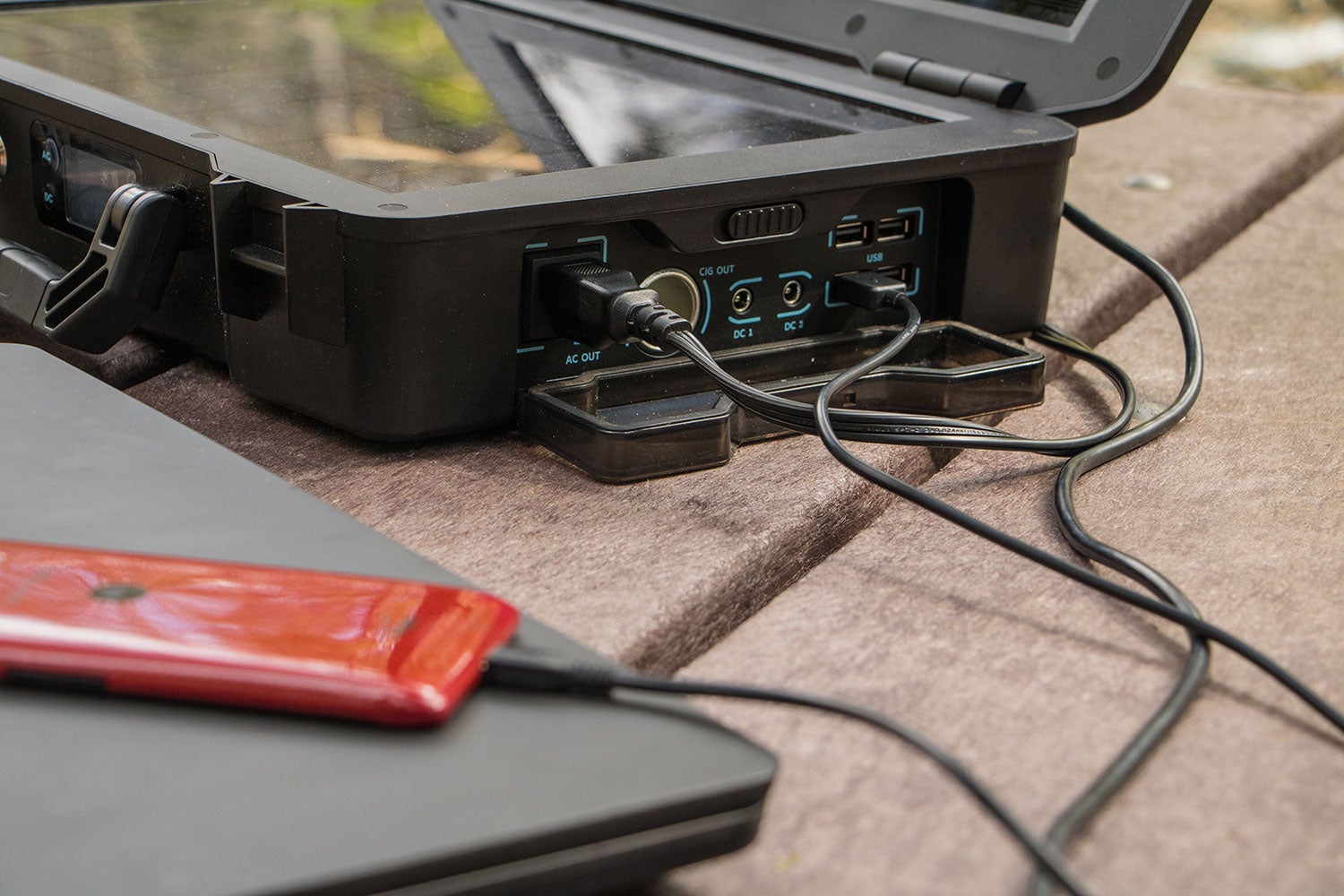
The rest of our regular household appliances do not operate on DC, so we must convert the electricity. Inverters connect directly to the battery and give out 110 volts when turned on. We have ours located in the cabinet right above the kitchen sink, so our technology can be hidden from view but easily accessible.
Using the inverter, we can run our LED rope and sconce lighting and charge our laptops. Inverters also give off a bit of heat, so every ten minutes or so, a built-in fan kicks on to cool the device. Our inverter also has a low voltage cut-off, which prevents damaging any electronics should the battery run low.
What We Cannot Power
With just our one battery, we can charge everything we really need and want. We can’t run many of the appliances which most people take for granted, as they produce a good deal of amps – like a hair dryer, coffee maker, or toaster oven. But for us, it’s no big deal because we toast and cook everything over our two-burner propane stove, make coffee in a French press, and save hair drying for when we are parked at a campground with a bathhouse. Less power usage is better for the environment.
Scalability
The amazing thing with solar is that our simple system is scalable. If you want to power more appliances, you’ll need more panels, more batteries, and a bigger inverter.
With a bigger system, you need more space to store everything and that adds to the total weight of your rig, which adds to your gas mileage performance. When making these choices about what you need/want, it’s all about trade-offs. To find out what size of system you need, check out this calculator.
Keep it Simple
The idea of living in a small space is one of intentional simplicity, not imposed depravity. We are more intentional in our resource usage than when we lived in a much larger house. And we simply don’t miss all the things we used to thoughtlessly plug into the wall outlet.
The Dyrt is the only camping app with all of the public and private campgrounds, RV parks, and free camping locations in the United States. Download now for iOS and Android.Popular Articles:
Articles on The Dyrt Magazine may contain links to affiliate websites. The Dyrt receives an affiliate commission for any purchases made by using such links at no additional cost to you the consumer.

